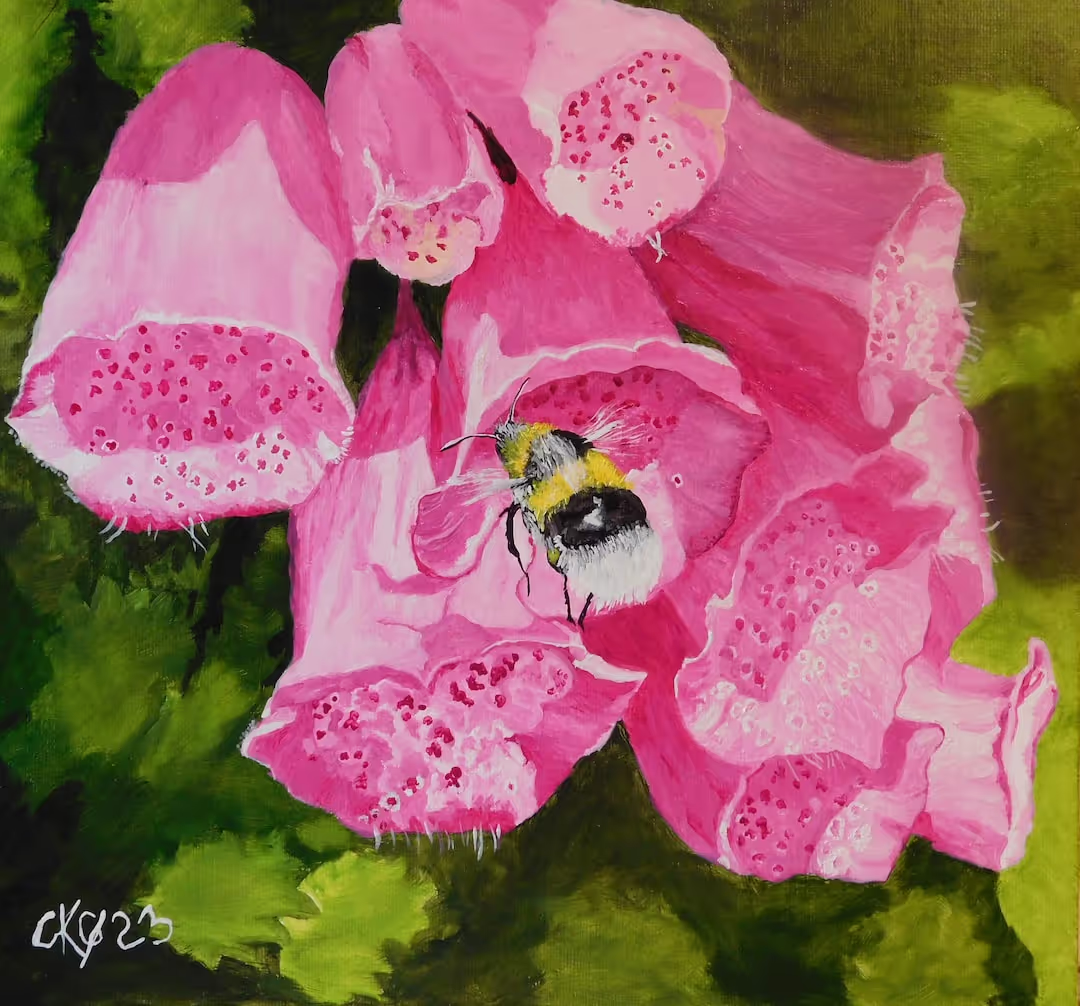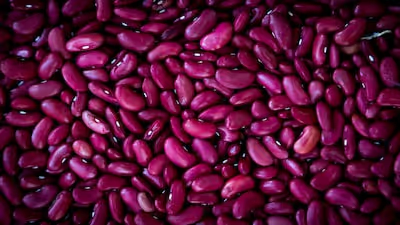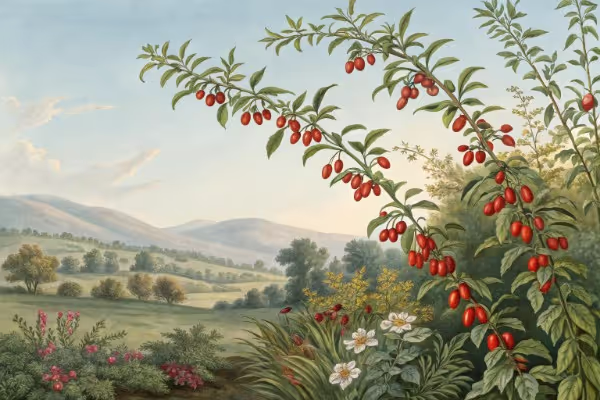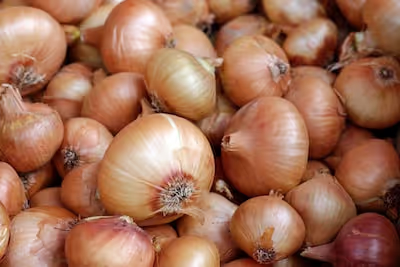Growing Stinging Nettle at Home: Tips From Garden Experts

Growing Stinging Nettle
Growing stinging nettle at home rewards you with a nutritious leafy green that's packed with iron, calcium, and vitamins. Sow seeds in fertile soil, place containers or garden beds in partial shade, and water moderately to keep nettles thriving. With proper care, you'll soon harvest tender leaves perfect for soothing teas, soups, and savory dishes—read on for pro tips to cultivate this beneficial wild edible.
Cheatsheet: Home-Grown Stinging Nettle Made Simple
🌱 Site & Soil
- Sun/part shade, moist, rich soil
- pH: 5.5–7.0
- Spacing: 12–18 in (30–45 cm) apart
🛠️ Tools and Products You'll Need
- Gloves (thick, sting-proof)
- Spade or trowel
- Watering can or hose
- Sharp scissors or shears
- Pots or raised beds (if container growing)
- Nettle seeds or root cuttings
- Organic compost
- Mulch
- Garden soil
🕓 Sowing Steps
- Start seeds indoors 4–6 weeks before last frost. Sprinkle on moist compost, barely cover. (Optimal: 68°F/20°C)
- Transplant seedlings or root cuttings outdoors after soil warms, spacing well.
- Water regularly; avoid drying out.
- Mulch to keep roots cool, retain moisture.
🌿 Harvest Tips
- Pick young top leaves with gloves
- Harvest before flowers appear for best flavor
- Trim tops for bushier regrowth
🧑🍳 Nutrition & Wellness
- High iron, calcium, antioxidant content
- Use in teas, soups, smoothies (cooked neutralizes sting)
- Supports immune health, anti-inflammatory
⚠️ Safety & Control
- Use gloves for all handling
- Contain roots—can spread rapidly
- Remove flower heads to prevent self-seeding
-
Growing Stinging Nettle at Home: expert notes that actually work
I tucked my first patch behind the compost bays, then learned fast that Growing Stinging Nettle rewards anyone who respects its bite and its appetite for rich, damp soil. It will feed you, your compost, and half the neighborhood’s pollinators.
Site, soil, and containment
Give nettles part sun to bright shade with steady moisture and deep organic matter, then watch them fly. Aim for loamy soil at pH 5.5 to 7.5 and add compost until it smells like good forest floor.
Rhizomes run, so plan boundaries before the first shoot. I use bottomed beds, buried edging 12 inches deep, or big tubs to keep goodwill with neighbors.
Urtica dioica is perennial in USDA Zones 3 to 10 and spreads by rhizomes and self-sown seed. Source: Royal Horticultural Society and USDA Plants Database.
Seed or divisions
Starting from seed
Seed is tiny and likes light to germinate, so sow on the surface and mist instead of bury. Chill seed for 2 to 4 weeks in the fridge for better sprouting and keep trays at 65 to 75 F, 18 to 24 C.
- Use a sterile seed mix and a fine sieve to top-dress with a whisper of vermiculite.
- Germination usually takes 10 to 21 days if you keep it evenly moist.
- Prick out at the first true leaves and pot up into a compost-rich mix.
Planting divisions
Divisions are how I start production patches fast. In late fall or very early spring, lift a chunk with a spade, split into hand-sized pieces with at least one bud, and replant 12 to 18 inches apart, 30 to 45 cm.
Water deeply, mulch 2 inches, 5 cm, and you’ll harvest the same season. Wear gloves that reach your forearms.
Containers vs beds
Containers tame the spread and put harvest at a comfy height. Use a 10 to 20 gallon pot, 15 to 30 liter, with drainage and a compost-heavy mix plus slow-release organic nitrogen.
In beds, install root barrier before planting and mulch thickly to keep soil cool. I refresh mulch twice each season.
Water, feed, and mulch
Consistent moisture grows tender tops and fewer stings. I water when the top inch dries and target 1 inch, 25 mm, of water weekly in dry spells.
Side-dress with compost in spring and midsummer. Nettles love nitrogen, so spent coffee grounds, diluted fish hydrolysate, or finished poultry manure all play well.
Seasonal care
Cut patches to 4 inches, 10 cm, after the first flush to push new growth. I do one hard cut in late spring and a lighter tidy in midsummer.
In cold regions, let stems stand to trap snow and protect crowns. Clean up in late winter with sharp shears.
Harvest without regret
Gloves, long sleeves, and a calm hand make this plant a delight instead of a prank. Morning harvest yields turgid shoots with the cleanest flavor.
- For fresh eating, pick 4 to 6 inch tips or the top 4 leaves before flowering.
- Snip into a basket instead of tugging stems, which can uproot young plants.
- To neutralize stings, blanch 30 to 60 seconds or dry fully before handling barehanded.
- I freeze blanched nettles in muffin tins and pop the pucks into soups and saag.
Stinging hairs contain histamine, acetylcholine, and other compounds that irritate skin; heat or drying makes them harmless. Sources: Kew Science and European Medicines Agency monograph on Urtica dioica.
Kitchen notes from a hungry grower
The taste hits like spinach that grew up and paid its taxes. I fold nettles into gnudi, pesto, and brothy ramen, and I prefer spring tops for delicate dishes.
Dry leaves at 95 to 115 F, 35 to 46 C, until brittle for tea or spice blends. Powdered nettle adds a deep green punch to noodles and bread.
Ecology and beneficials
Plant a clump near wildlife corners if you can. Red admiral butterflies use nettles as larval food, and aphids on nettles often feed lady beetles before they migrate to your brassicas.
I keep one small strip unharvested to shelter insects and to read the patch’s health. If that strip looks pale, I feed the whole bed.
Common problems and easy fixes
- Pale leaves point to nitrogen shortfalls. Add compost and water deeply.
- Scorch on edges says drought. Thicken mulch and adjust irrigation.
- Chewed tips usually mean caterpillars. Accept some nibbles or net one bed and leave another as a decoy.
- Overrun patch means you skipped edging. Lift stray rhizomes while the soil is moist.
Varieties and lookalikes
- Urtica dioica: perennial, tall, classic culinary plant, spreads by rhizomes.
- Urtica urens: annual, shorter, quick crop in containers, more sting per square inch in my experience.
- Urtica dioica subsp. galeopsifolia, the fen nettle: fewer stings and lankier habit, better for wildlife than cuisine.
- Deadnettles, Lamium spp., have no sting and different flowers. Do not cook them like nettles if you want that mineral-green flavor.
Smart containment and layout ideas
- Grow in a stock tank on pavers to stop runners.
- Ring beds with stepping stones so rhizomes hit a dry barrier.
- Pair with comfrey on the far edge of the garden to create a living fertilizer corner.
Nettle fertilizer tea that plants devour
- Pack a bucket half full of chopped nettles, then cover with water and weigh it down.
- Steep 7 to 10 days at 60 to 75 F, 15 to 24 C, stir daily, and brace for the barnyard aroma.
- Strain, dilute 1 to 10, and drench soil, never leaves. I use it on heavy feeders like tomatoes and squash.
Compost the solids or trench them into fall beds. Clean tools after using the tea, as it can gum up sprayers.
Regulations and safety
Check your local invasive species lists before planting, especially near waterways. Some regions restrict planting near native wetlands.
If you intend to use nettle as a herbal, read monographs from the European Medicines Agency and talk with a clinician if you have conditions or take medications. As food, cooked nettles are widely eaten across Europe and North America.
Buying guide for Growing Stinging Nettle
- Seeds: choose fresh, stratified lots from native plant nurseries for better germination.
- Divisions or plugs: a faster start for production patches and more predictable traits.
- Gloves: thick nitrile-coated fabric or leather gauntlets save forearms during harvest.
- Root barrier: 18 inch, 46 cm, deep plastic or HDPE edging for in-ground control.
- Containers: 10 to 20 gallon, 15 to 30 liter, with saucers to maintain moisture.
- Shears: bypass style with a clean cut for tender tips.
- Dehydrator: low-temp control, 95 to 115 F, 35 to 46 C, for clean tea leaves.
My field notes for consistent yields
- Space plants so you can reach from two sides and keep paths weed-free.
- Rejuvenate clumps every 3 years by splitting and replanting the youngest crowns.
- Stop harvesting once flowering starts if you want the finest texture.
- Leave 10 percent of growth for wildlife and as a living mulch around the crowns.
Answers to questions I get about Growing Stinging Nettle
- Will it sting forever? New growth stings more, and heat or drying removes it completely.
- Shade or sun? Bright shade to morning sun keeps leaves tender in hot summers.
- Indoors? Yes under bright lights in a deep tote, though airflow matters to prevent mildew.
- Pets and kids? Fence or pot off an area and teach respect, as the sting can surprise.
- Can I eat it raw? I do not, and I recommend blanching or drying for safety and comfort.
- How big will it get? In rich soil mine hit 3 to 6 feet, 0.9 to 1.8 m, by late summer.
Cross-pollinating ideas
I plant nettles near the compost because the leachate feeds them and they feed me. This corner doubles as a bug bank that steadies my tomatoes when aphids boom in spring.
Spent nettles hot-compost fast due to nitrogen, so they help fire a pile with autumn leaves. The loop tastes as good as it gardens.
Sourced guidance you can trust
- Royal Horticultural Society: cultivation guidance for Urtica dioica and containment tips.
- USDA Plants Database: distribution, life cycle, and zone references for stinging nettle.
- Kew Science Plants of the World Online: botanical description and chemistry of stinging hairs.
- European Medicines Agency, HMPC monograph on Urtica dioica: safety, preparations, and traditional uses.
- University Extension bulletins from Minnesota and Oregon: edible uses, handling, and foraging cautions.
Frequently Asked Questions About Cultivating Stinging Nettle
What soil works best for growing stinging nettle at home?
Stinging nettle thrives in rich, loamy soil abundant in organic matter. Aim for soil with a neutral to slightly acidic pH—somewhere between 6.0 and 7.0. Infuse your dirt with well-rotted compost or aged manure before planting to satisfy nettle's relentless appetite for nutrients.
How much sun does stinging nettle prefer?
This resilient wildling prefers partial shade but tolerates full sunlight as long as its roots remain moist. If sun scorches your plot throughout midday, offer nettle some protection—plant it near taller companions or position containers in shaded alcoves.
How often should stinging nettle be watered?
Consistent moisture rules nettle's kingdom. Water your plants frequently enough to keep the soil evenly damp without waterlogging their roots. Allowing the soil to turn bone-dry invites scraggly growth and bitter disappointment.
Can stinging nettle be cultivated in containers?
Absolutely—container-grown nettle thrives if space is limited or containment desired. Select a deep and spacious pot; nettle sends adventurous roots downward. Fill it with nutrient-rich soil, water regularly, and keep the container slightly shaded. Wear gloves and keep aware of nettle's prickly nature during handling and harvest.
How can I safely harvest stinging nettles?
Suit up with protective gloves and long sleeves, then harvest nettle's tender tops using sharp scissors or garden clippers. Snip the young growth—roughly the upper third of the plant—before flowers bloom. Wilted or cooked, nettle loses its notorious sting, leaving behind a mineral-rich, tasty reward.
What's the best way to propagate stinging nettle?
Rhizome division and root cuttings yield quick and effective results. Uproot and gently separate an established clump, or dig roots, snip them into pieces, then plant horizontally beneath the soil surface. Keep them moist, and nettle soon emerges, vigorous and inexorable.
Growing Stinging Nettle rewards the patient gardener with more than just wild flavor and nutrients—it’s a lesson in respect. Give nettle a shady spot, rich soil, and some distance from high-traffic areas. Gloves are non-negotiable. Harvest young leaves for their best punch, and keep the patch in check before it takes over. Nettle’s sting is temporary, but its benefits—whether in the kitchen or as compost gold—last all season. Like growing blackcurrant or other old-world crops, nettle brings forgotten utility home. Take care, and it’ll return the favor—year after year.
The Prepper's Guide to Homegrown Stinging Nettle
Essential Nutrient-Rich Resource
Stinging nettle (Urtica dioica) delivers protein, calcium, iron, vitamins A and C, omega-3 fatty acids, and antioxidants.
- Dried leaves: High-protein flour substitute, stores safely without refrigeration for up to 12 months.
- Fresh leaves: Quickly boiled or steamed to neutralize stings, resulting broth used as mineral-rich emergency hydration.
- Seeds: Harvested late summer for fats, protein, and fiber; dry thoroughly for extended storage.
Viable Fiber for Textiles and Cordage
Harvest mature stalks toward end-of-season; retted fibers woven into durable twine, netting, or fabric with adequate tensile strength for survival applications.
Security and Perimeter Defense
Strategic planting around property perimeters deters intruders and wildlife; nettles grow densely up to 6 ft (1.8 m) tall, forming irritating physical barriers.
Self-Reliant Pest Control
Fermented nettle tea repels aphids, mites, and fungal diseases in vegetable gardens; ferment leaves submerged in water for two weeks, dilute 1:10 before applying.
Efficient Compost Activator
High nitrogen content accelerates compost decomposition; layers of chopped nettle increase microbial activity and enrich resulting soil amendment.
Rapid Growth & Reliable Yield
Thrives in temperate climates; survives temperatures down to -30°F (-34°C). Perennial nature offers reliable food, fiber, and medicinal yield annually with minimal upkeep.
Find out which plants will thrive in your garden!
Answer a few fun questions and get custom plant recommendations perfect for your space. Let’s grow something amazing together!

start your season





